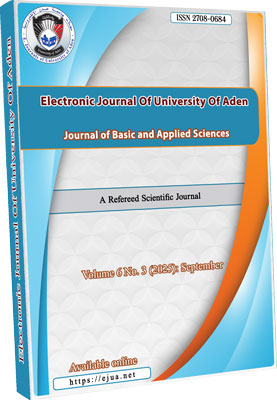QUANTIFICATION OF GLUTEN CONTENT IN VARIOUS GRAIN FLOUR SAMPLES FROM YEMEN
DOI:
https://doi.org/10.47372/ejua-ba.2025.3.468Keywords:
Gluten, Grain flour, Celiac disease, Gluten sensitivity, Gluten-free dietAbstract
This study aimed to quantify the gluten content in a range of grain flour samples, including wheat, whole wheat, and gluten-free grains, collected from Yemen. Gluten content was determined using a standard wet gluten extraction method, and fiber content was analyzed using the AOAC method. The results showed that the white flour samples had the highest gluten content, ranging from 16.9% to 17.8%. In contrast, whole wheat flour samples had relatively lower gluten content (15.0% to 15.8%), but higher fiber levels. The gluten-free grain flours, such as soya, millet, sorghum, and oats, contained no detectable gluten, making them suitable alternatives for individuals with gluten-related disorders. The study also revealed variations in gluten content between different brands of the same flour type, highlighting the importance of product-specific analysis. These findings provide valuable insights into the dietary implications of gluten-containing and gluten-free foods, which can assist healthcare professionals, food manufacturers, and consumers in making informed decisions.
Downloads
Downloads
Published
How to Cite
Issue
Section
License
Copyright (c) 2025 Nasser M. N. Masood, Nasr Abdulrb Ali, Mokhtar S. S. Al-Salimi, Gamal A. Al-Dahbalid, Ahlam Boraik Munassar, Rodyna Sabri Mohammed, Amani Qaid Ali, Rasha Ahmed Asker, Doa'a Omer Ahmed, Roqea A. Salam Saif, Adel A. Saeed

This work is licensed under a Creative Commons Attribution-NonCommercial 4.0 International License.










